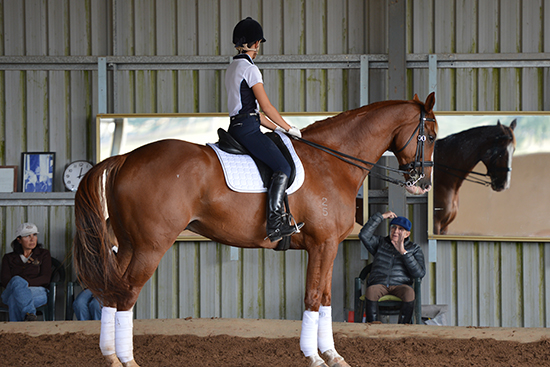
We continue our five part series in honour of the late Miguel Tavora…
Story – Christopher Hector Photos – Roslyn Neave
Part 1 here
Part 2 here
Part 3 here
I remember Ernst Hoyos saying to me that he would never like to teach in English because there are not enough words – he said that to discuss a half pass, he could find a dozen words in German but only a couple in English. And it is true with expressions like descente de main and überstreichen – you can, with difficulty, translate them into English but lose quite a deal of precision in the process… Here’s a rough attempt: Both involve breaking the contact, giving the reins, and in both cases the horse is expected to maintain his outline.
These concepts are crucial in Miguel Tavora’s day to day training and they are closely related to the search for a horse in perfect balance…
“The ideal horse, I ask him to do something and he should keep doing it until he dies – unless I tell him to do something different. But this isn’t what happens, the horse will always lose the rhythm, lose the balance, we have to make amendments, but we only act if – and when – something changes.”
“We have techniques to teach the horse to go in self carriage. You have the descente de main, or the überstreichen which is exactly the same thing, but a different way to achieve it. I use more the überstreichen with young horses, and the descente de main with a horse that is more collected. What is important is that you break the contact.”
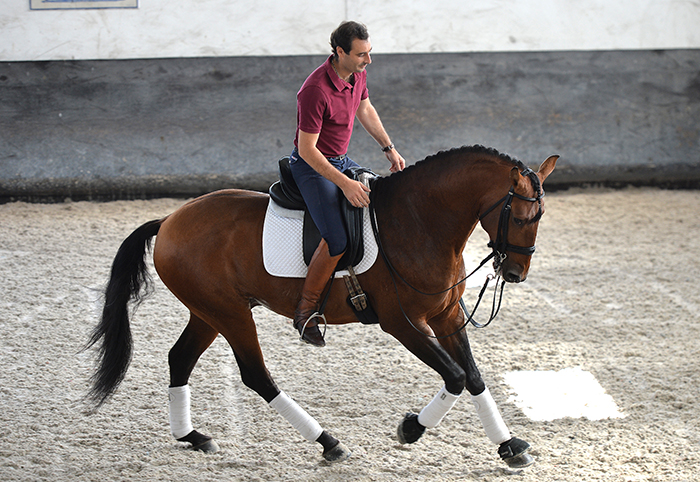
It was thanks to Miguel that we met the Portuguese trainer, Rodrigo Torres – interesting to note, Rodrigo is now getting great scores in competition Grand Prix dressage…
“The reason for this is that the young horse should move with a balance more horizontal, and in order to break the contact, I stretch my hands towards the bit. With a more advanced horse, I use the classical descente de main, which means lowering of the hands, to break the contact. At this stage the horse is more collected and therefore lowering the hands is sufficient.”
Story continues below the advertisement
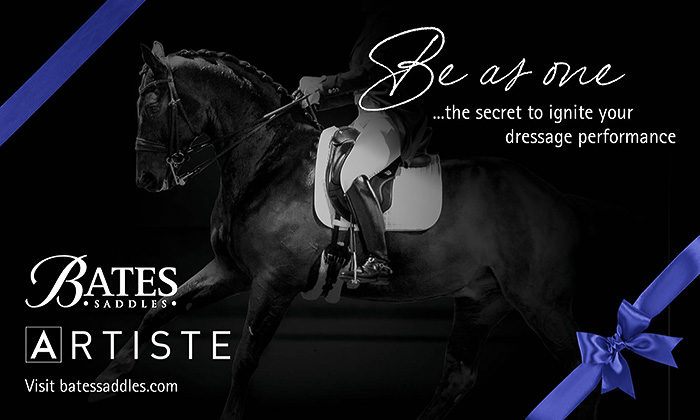
“I read one trainer who said, ‘if I give the rein after three strides I have to take it back again, otherwise the horse will stretch his neck.’ That is not correct. I give, and if the horse stretches his neck after three strides, it means the horse is not in self carriage. The horse should do nothing that I don’t tell him to do. If he does things that I have not told him to do, he is just disobedient.”
“If I want him to extend the neck, or lower the neck, I have to give him a signal to do that, a signal that is different from the uberstreichen. For uberstreichen, I just break the contact, and everything is very steady and quiet. On the other hand, if I want the horse to lengthen the neck, I give little by little, and at the same time, with my legs I push and make the horse follow my hands to lengthen, arch and lower the neck.”
“It is not instinctive for the horse to do this, I have to teach the horse to do this. Normally I do it on the circle and open my inside rein, if necessary right down. If I make the descent of the neck on the circle, then there is much less chance of the horse going on the forehand. When the horse takes the correct bend on the circle, he will keep the balance, if he goes on the forehand, I will feel it straight away because he will make the circle smaller or bigger.”
“I make a signal with my fingers to lower the neck, I make a signal with my legs to make him lengthen the neck, I prefer to say, arch the neck down. Because if we just say ‘stretch’ he might lengthen and hollow, he can open the gullet and put the neck down, and everything goes hollow. Arch the neck down – he lengthens and arches at the same time. Some horses might lengthen more than others, it depends on the conformation and how long they are over the loins.”
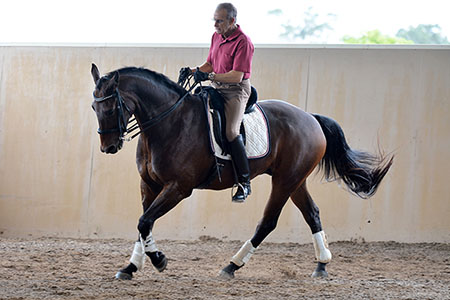
“Each horse is different but it is not the question of the number of strides – when I am making the uberstreichen, I give, and the ideal situation is that the horse goes exactly the same way as long I don’t do anything to change his attitude. If I do, descente de main, exactly the same – the ideal is to put the horse in self-carriage, I do nothing, and the horse changes nothing. In the beginning, the horse is not going to stay like that – I go in collected trot, I give and the horse will try to go away, I make an amendment, put him right, then I give, make an amendment, give, until the horse understands – ah, he wants me to stay here, and when he learns, he will stay there as long as I want.”
“If I want him to arch the neck down, I use different aids, or I bend him, and I always use my legs a bit more. When I make a descente of hands or uberstreichen, I shouldn’t do anything special, I’m just on standby to keep the impulsion. But when I do the lengthening of the neck down, my legs have to cooperate with the giving of the reins, so the horse follows and goes down. That is a big difference.”
“General Decarpentry described ‘descente de main’ as the relaxation of the pressure of the fingers on the reins which allows a gradual lengthening of the reins while the horse keeps his balance and poise without changing his attitude in any way. This is how la Guérinière and later, Baucher, described this action. The exercise lowering of the neck, in some translations of German texts is referred to as ‘chewing the reins out of the riders’ hands’. I disagree with this description, as this action would be very similar to a horse who pulls on the reins. The lowering of the neck, which I prefer, is a gymnastic exercise to stretch and strengthen the top line, or just to stretch and relax after working in collection.”
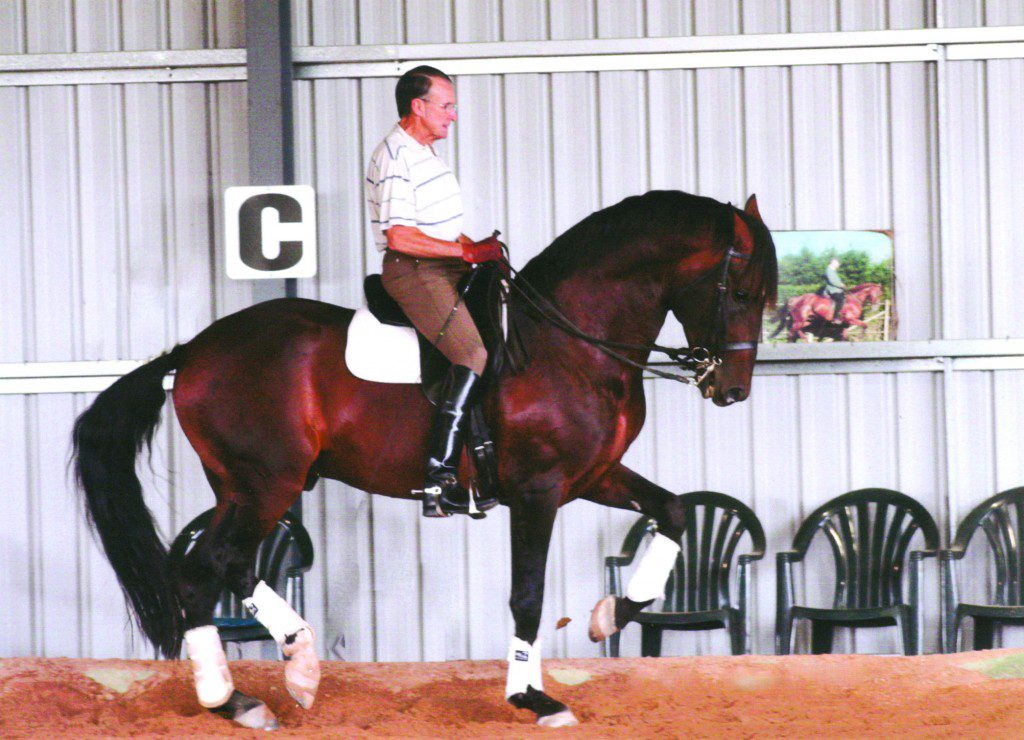
“The descente of hands keeps the horse in self-carriage, the lowering of the neck allows the horse to arch and lengthen the neck down. It is similar what you are doing, and the horse might get confused, if he tries to do the wrong thing, then I make an amendment and correct him.”
I can understand the role of descente de main in the collected work, but for extensions in trot or canter, do we want more contact? More weight in the rider’s hand?
“I don’t. I want to feel the contact firmer, because the push is firmer, but I don’t want to feel any more pressure. There is a feeling that is firmer, I feel everything is going forward. People say the horse ‘goes to the bit’ – he doesn’t go to the bit, the bit is in his mouth. He accepts the bit – that is completely different.”
“When I lengthen the paces, I must feel a firmer contact – not stronger – on my reins.”
Story continues below the advertisement
“On the circle I like to make an uberstreichen to encourage the horse to go in self carriage. I make the uberstreichen only on the inside rein, to keep him a little bit bent. The longer he goes without contact, the better – it means his body is in self carriage, and he is comfortable going like this. But I still have the contact on the outside rein because that explains to the horse that I want that stretch, and I don’t run the risk that he will become shorter in the neck. By giving the inside rein and keeping the outside rein very steady, I encourage the horse to accept the outside rein, and to be firmer on the outside rein. The most important thing when I make a descente de main or uberstreichen is that the horse must stay in the same attitude. If he changes his attitude, he has changed the balance. I need to make an amendment to put him back on the right balance.”
Story continues below the advertisement
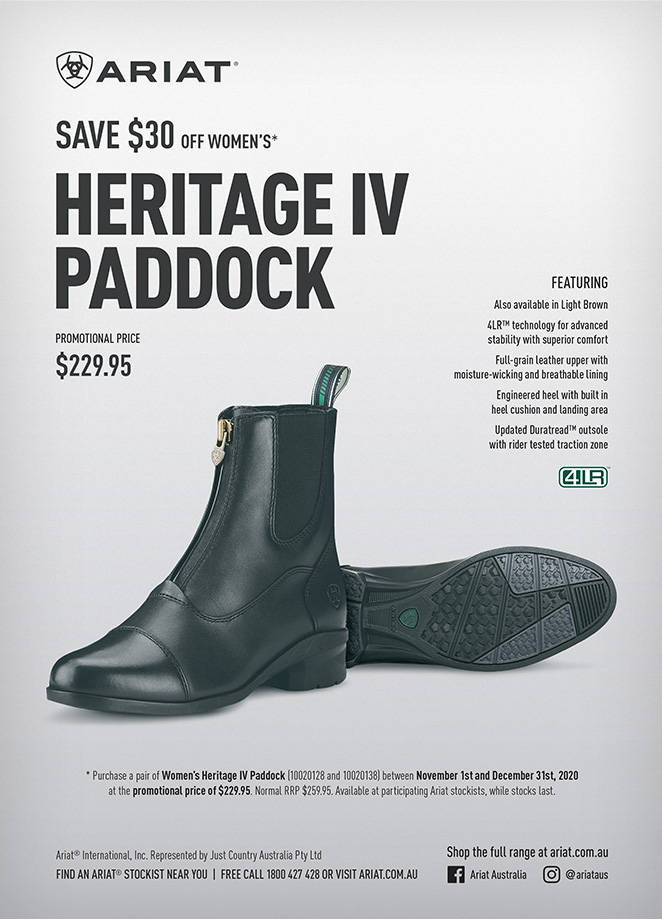
Enough with the theory, time to put it into practice, and it looks as if the next lesson is going to be a challenge…
Justin Worthy bought his horse, Northern Aslan, two years ago, and found him talented, but very hot and nervous. When Aslan enters the arena, he looks right off his tree. However Miguel’s magical circle seems to be doing the job, gradually the bay starts to relax a little.
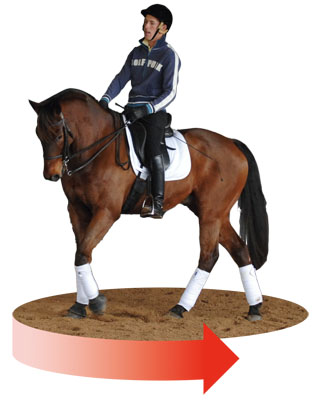
“Open well your inside rein and relax your legs – one step straight, halt and walk, halt and walk…”
“Now on the twenty metre circle in trot, your body all relaxed and melting with your horse, not one muscle speaking, push with all the muscles relaxed. When we feel our horse tense we have to melt with the horse with not one muscle contracted… the horse is a herd animal, our muscles relax, their muscles relax.”
“Now take him along the wall in the shoulder fore – he is still a bit tense, but he will relax.”
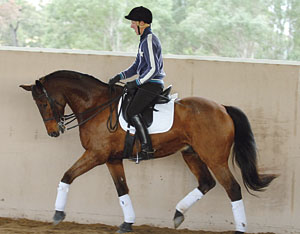
On to the 20 metre circle again, and Miguel is getting Justin to bend the horse to the inside and then it’s “sit, collected trot, close your fingers, grow taller and walk…”
“Now in the sitting trot, collect, push and give. When you feel the horse is tense, the best thing is to do what the Old Masters called ‘breaking up the strength and movement’. This was a major technique in the method of Baucher. To accomplish this just walk and if necessary make a small circle to relax and trot again. Never let the horse become tense.”
They are trotting again, and using the tactic that Miguel described in an earlier article of rising on the inside diagonal, now the outside, now the inside, and truly the transformation is remarkable, the horse has really started to stretch, to start to look like he might be capable of producing something interesting… And even when Miguel gets Justin taking the horse through the shoulder in / travers routine, he insists that the neck doesn’t shorten:
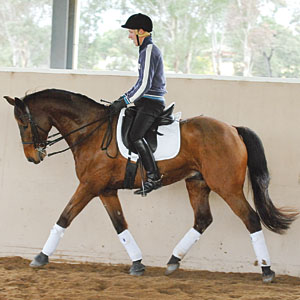
“Invite him to lengthen the neck. We need horses with a neck – now go to rising trot, round and down. Beautiful, beautiful… he’s covering ground, very active behind, now pick him up, sit and walk on. I see riders who lower the neck in the trot, then they go straight to walk and the horse falls on the forehand. Pick the horse up before asking for a transition. Every action we make with the horse is training, you can’t tell the horse, ‘now we are not training’. Always the balance is the main thing, sometimes the balance can change but it is the first thing we think about.”
“Okay, let’s go walk. Put him on the bit, hands more forward, that is very nice with the outside rein, now collect the walk…”
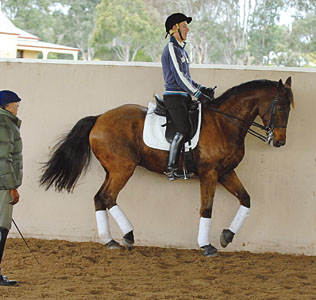
Suddenly there are some very good half steps, suddenly some very fine piaffe.
As always there is a little break before we move on to the next exercise…
“Trot around me in a very small circle to the right and bend him left to renvers position, now bend him right and passage.”
Hey presto, the passage comes, but always the attention is on the quality of the movement: “Bend to the inside, give, give, give, more, go to renvers he is too engaged and the passage becomes too much like piaffe.”
This really has been a most impressive lesson, and Miguel wisely decides that there would be no point in working on canter, the horse has done enough.
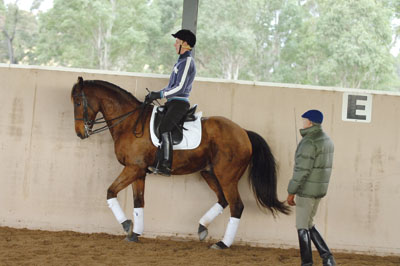



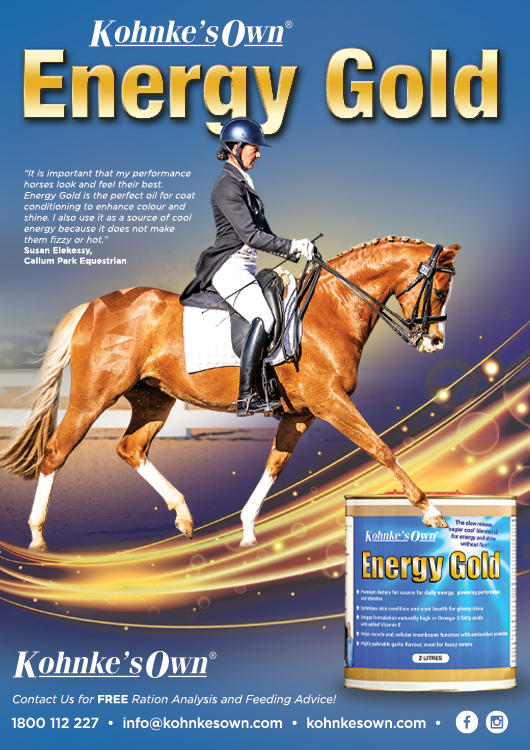
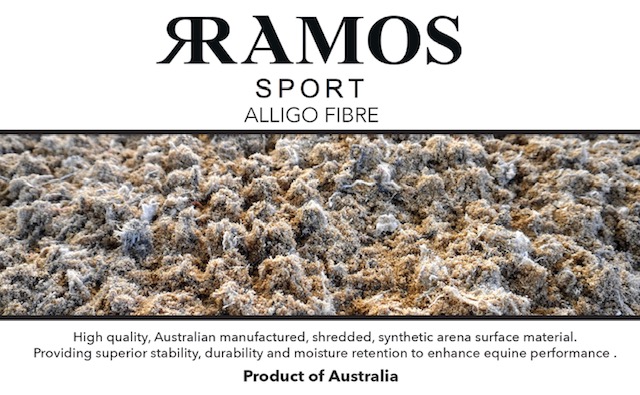
This is beautiful and thankfully I did learn how to ride this way, I also worked diligently at teaching my students in this manner.